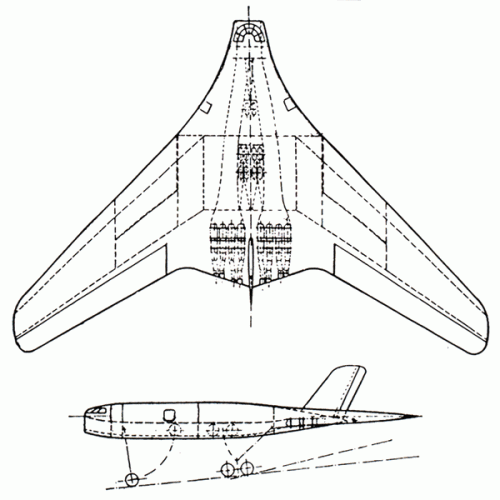- Joined
- 18 March 2008
- Messages
- 3,529
- Reaction score
- 876
From Herwig & Rode’s “Geheimprojekte der Luftwaffe” a Junker’s Fersntbomber (distance bomber) proposal of 1945. Designed by Heinrich Hertel in cooperation with the DLS (German Glider Institute). Post war passenger and freighter versions were planned.
Span: 51.3 m, Length: 31 m, Wing Area: 1,100 sq m, Wing Sweep: 45 degrees, Engines: 4 He S 109-011 or 4 Jumo 109-012, Range: 17,000 km, Speed: 1,030 km/h, Gross Weight: 90,000 kg, Bombload: 8,500 kg, Crew: 8-10
This is a very interesting aircraft because it’s of similar size and bombload to the B-47 but carries a lot more payload (extra crew and defensive weapons) to twice the range without the high wing loading and presumably ‘coffin corner’ performance. It’s also one of the first BWBs.
Span: 51.3 m, Length: 31 m, Wing Area: 1,100 sq m, Wing Sweep: 45 degrees, Engines: 4 He S 109-011 or 4 Jumo 109-012, Range: 17,000 km, Speed: 1,030 km/h, Gross Weight: 90,000 kg, Bombload: 8,500 kg, Crew: 8-10
This is a very interesting aircraft because it’s of similar size and bombload to the B-47 but carries a lot more payload (extra crew and defensive weapons) to twice the range without the high wing loading and presumably ‘coffin corner’ performance. It’s also one of the first BWBs.


